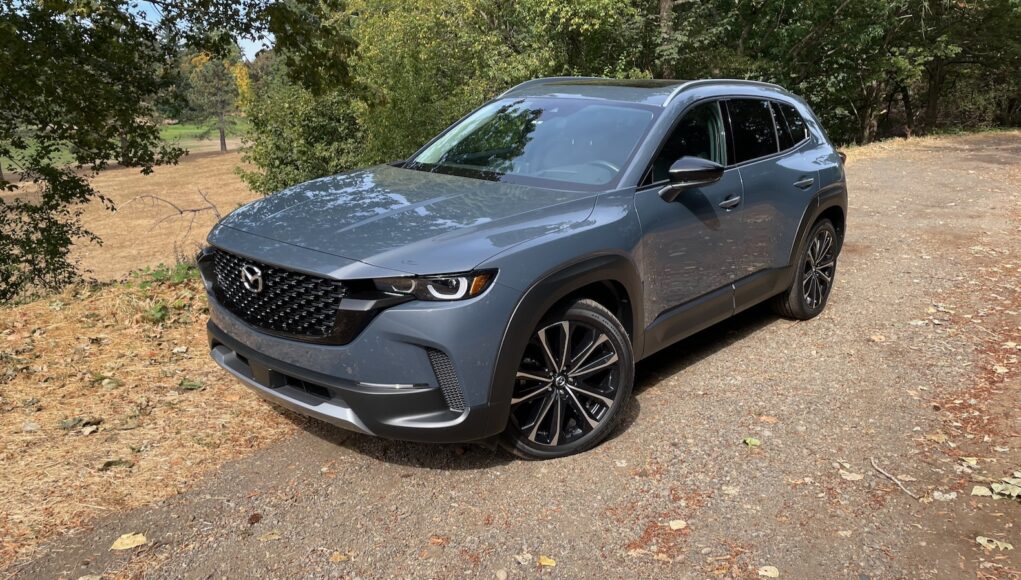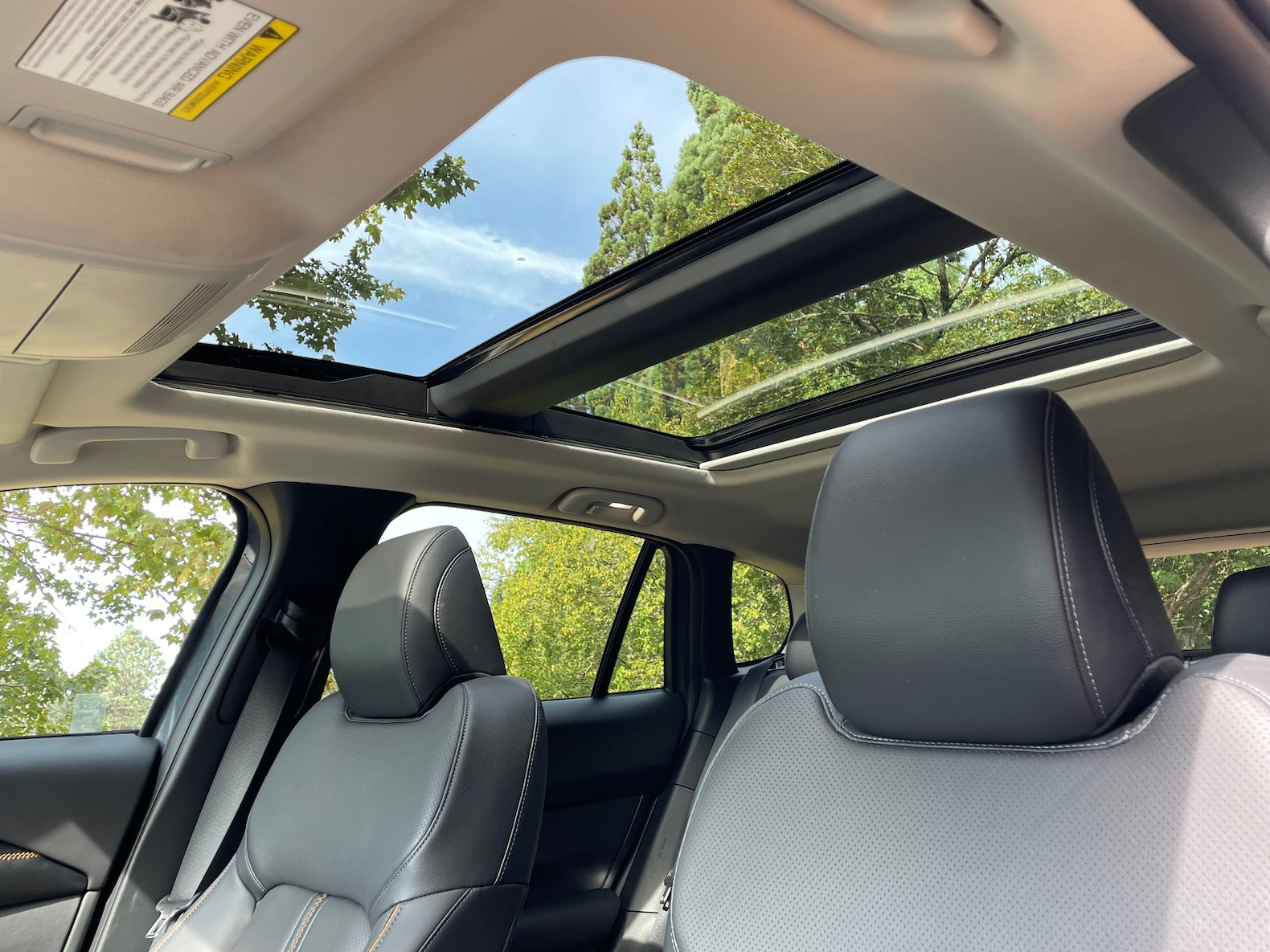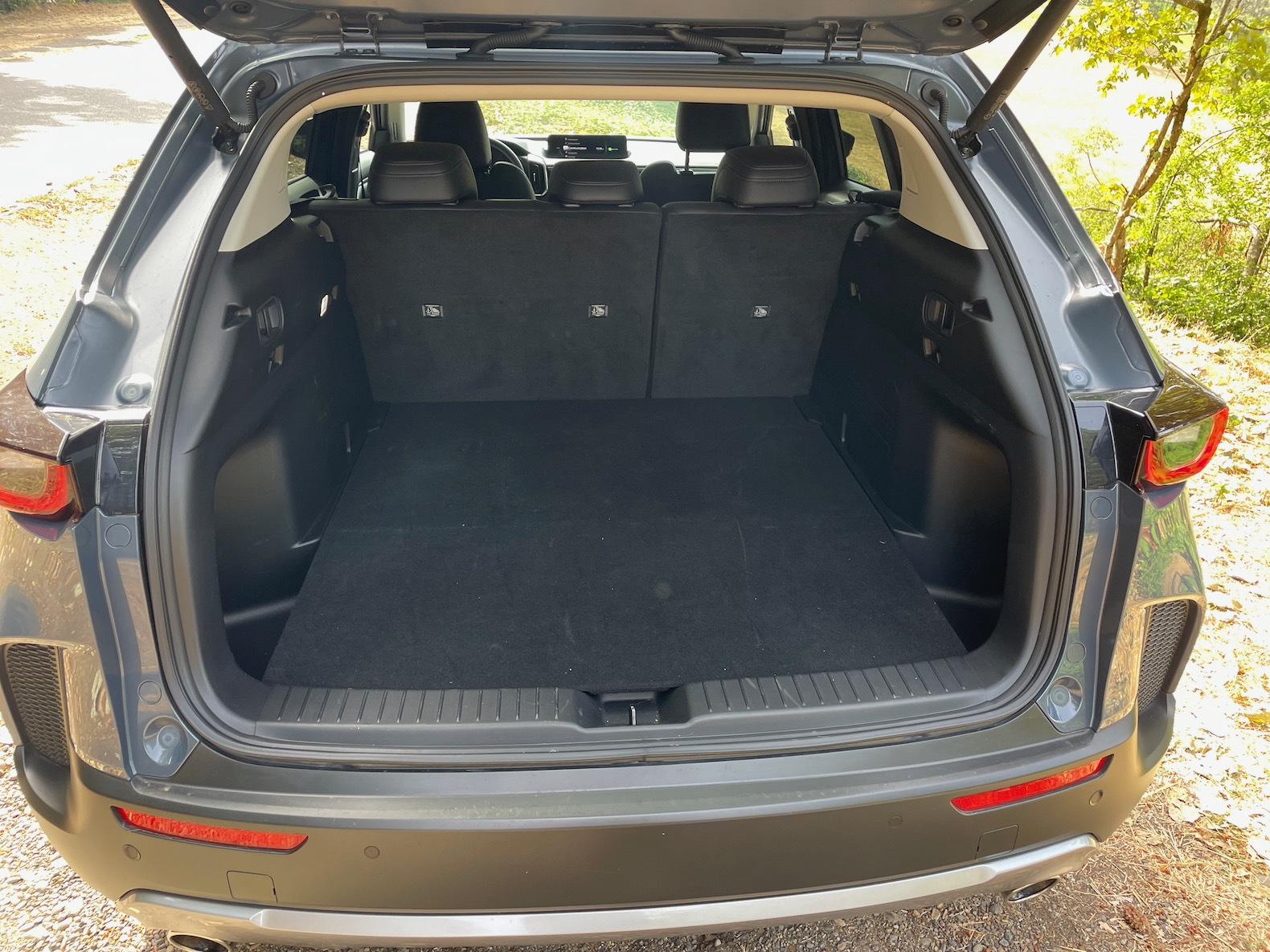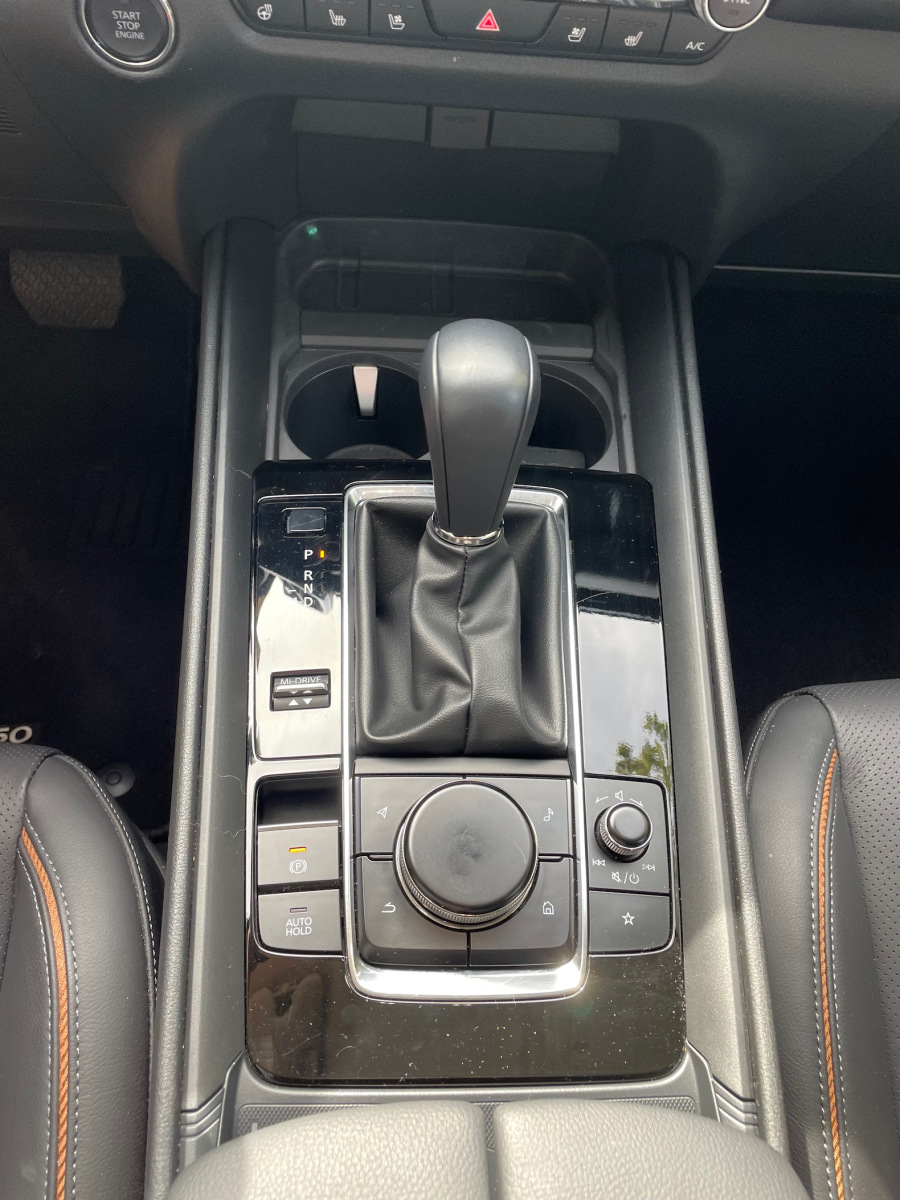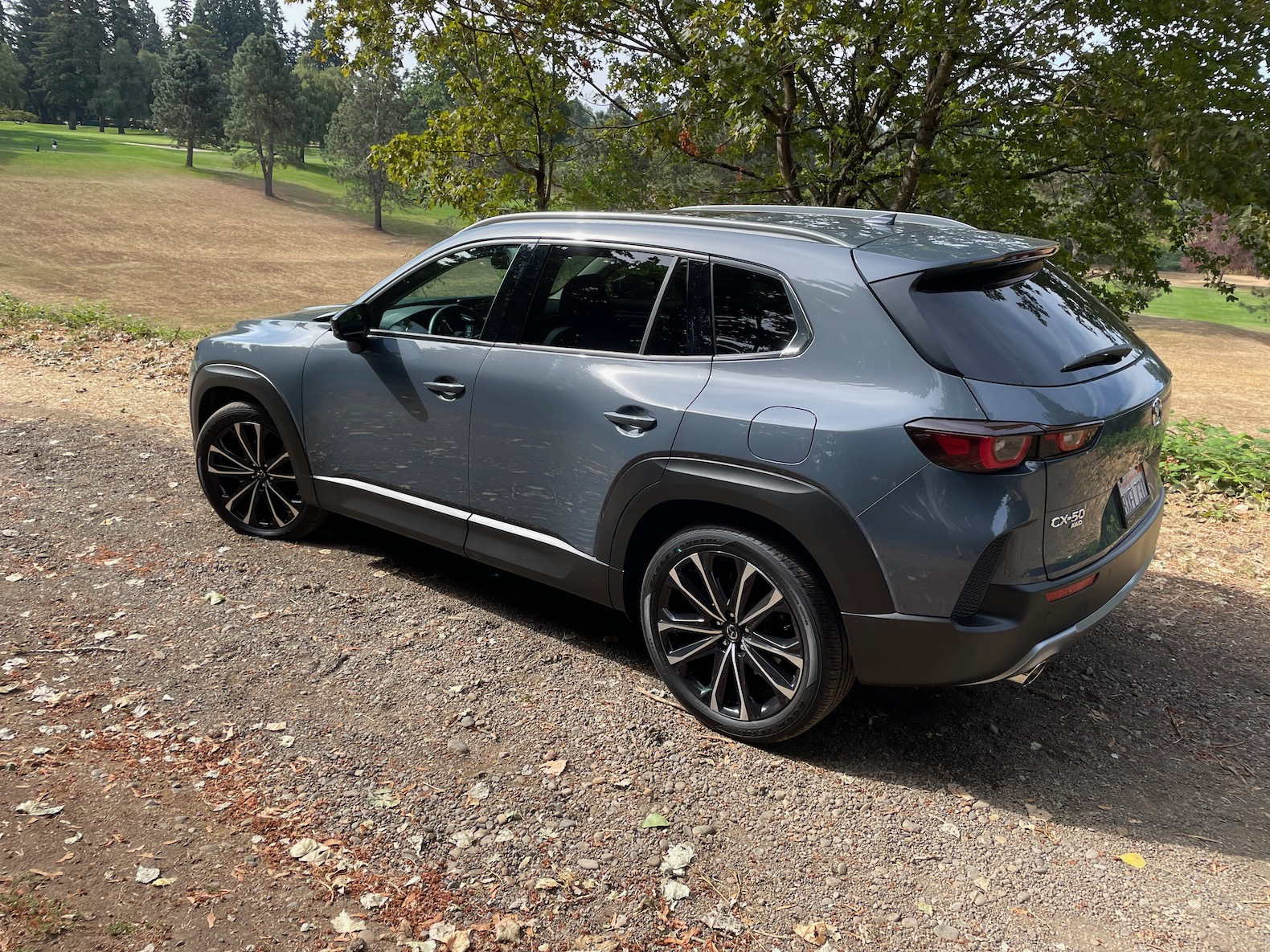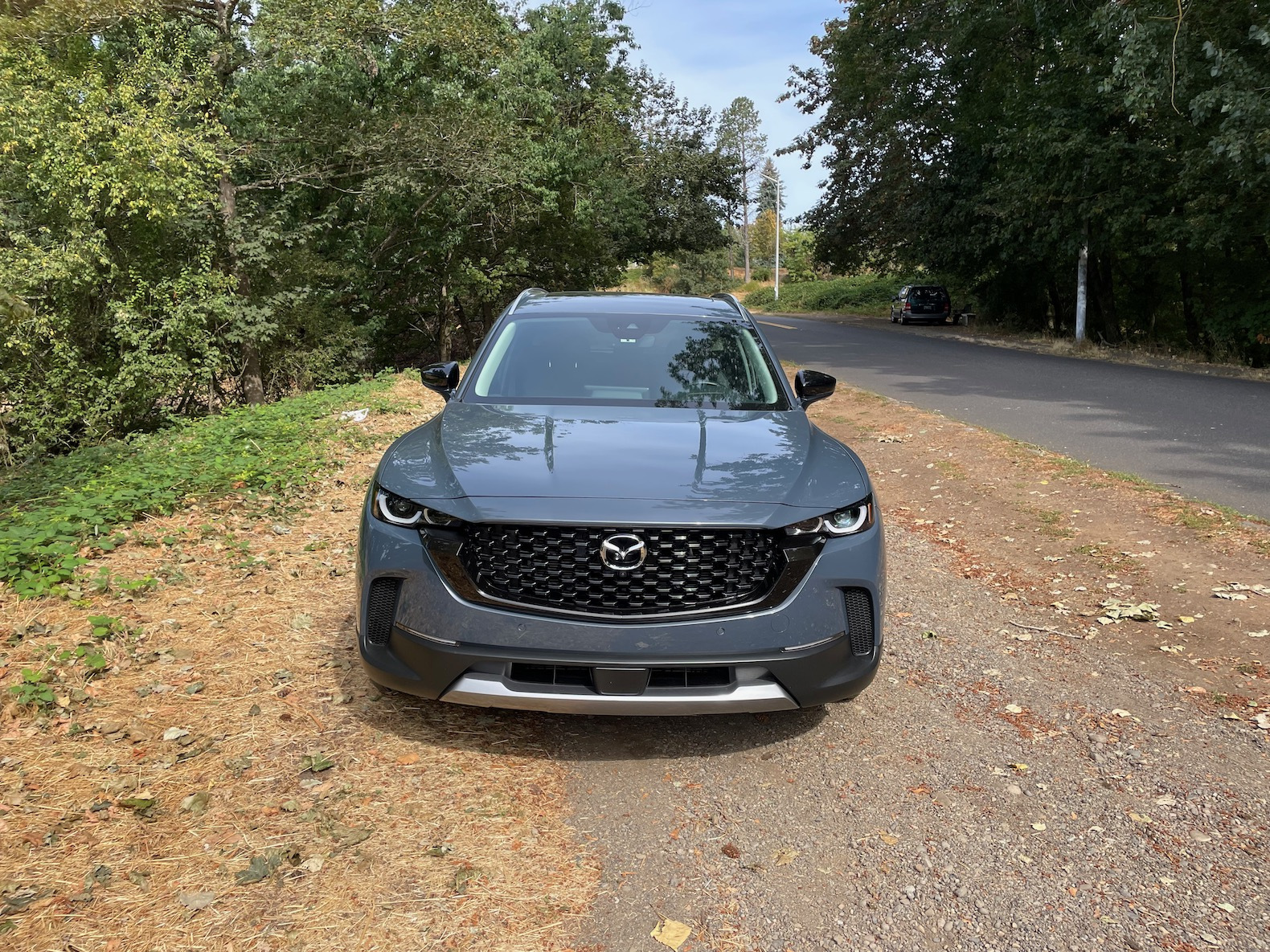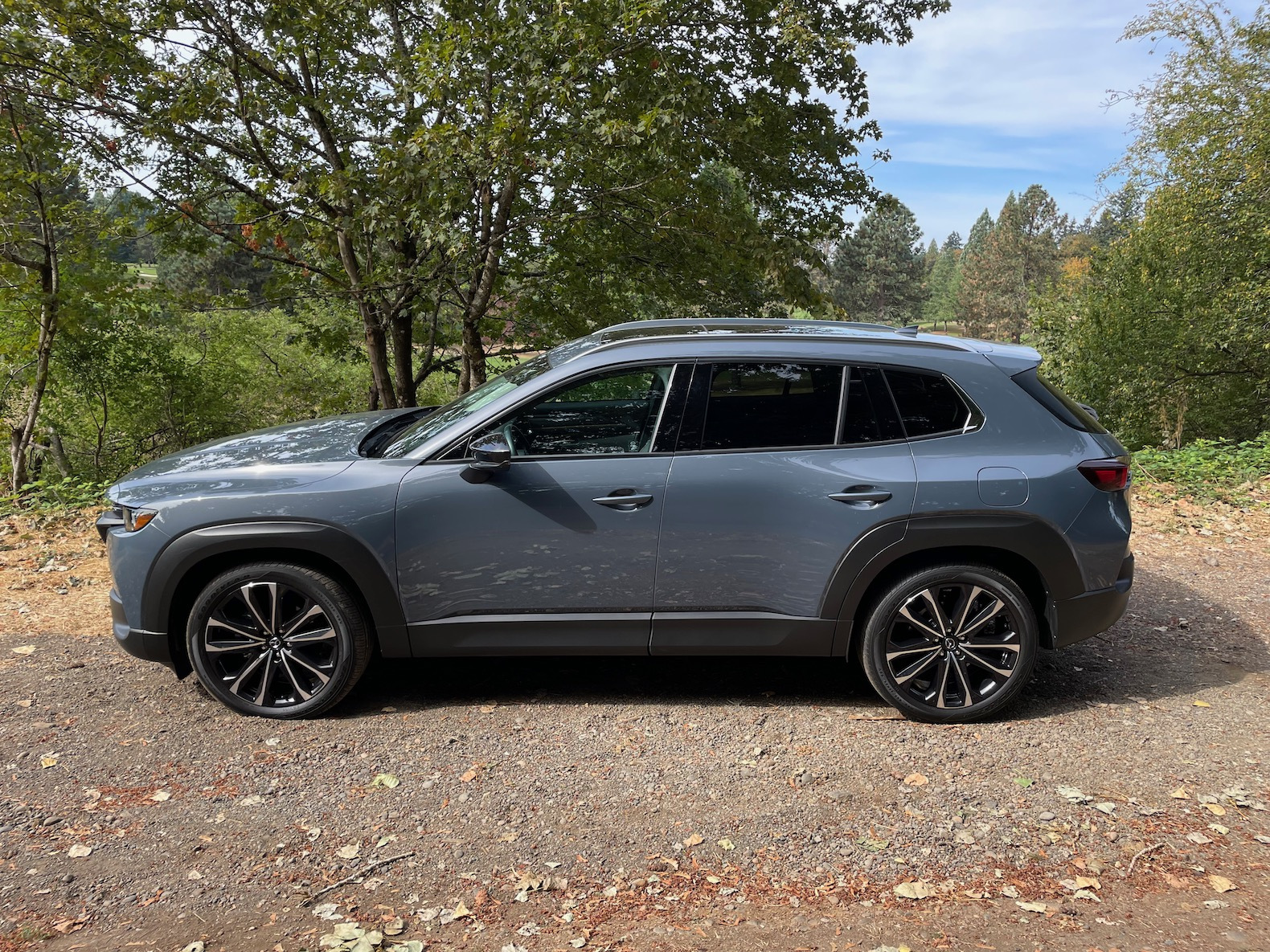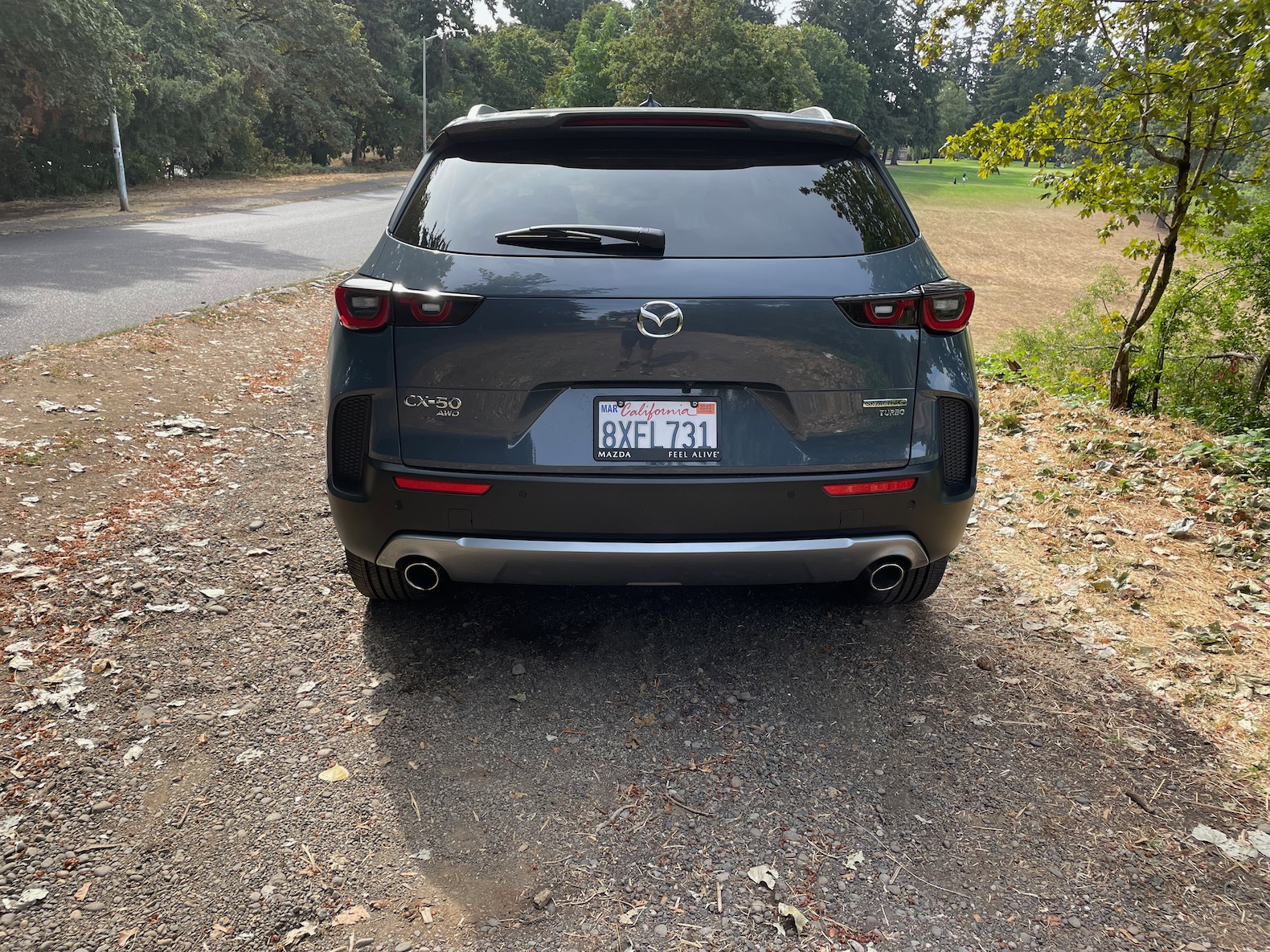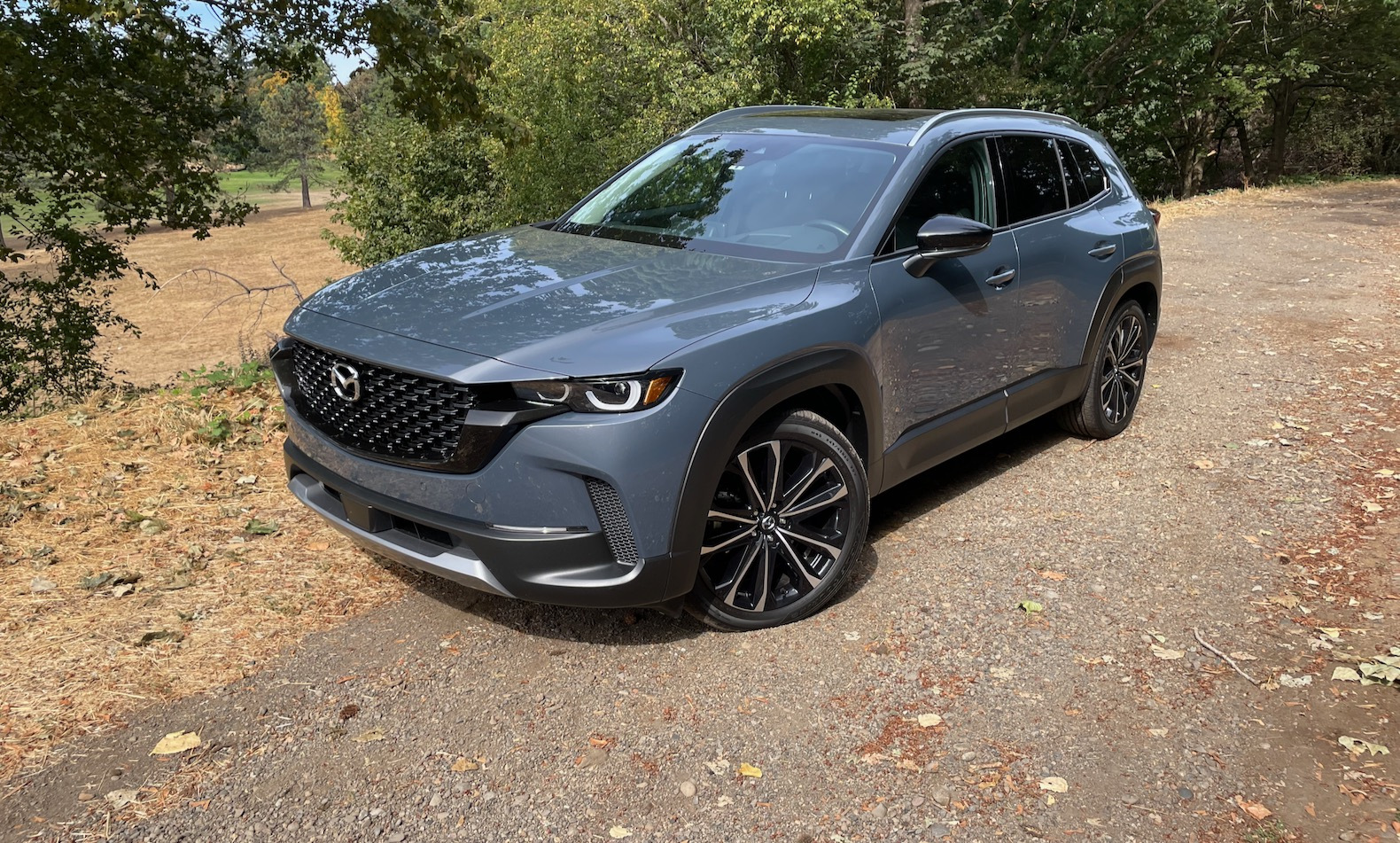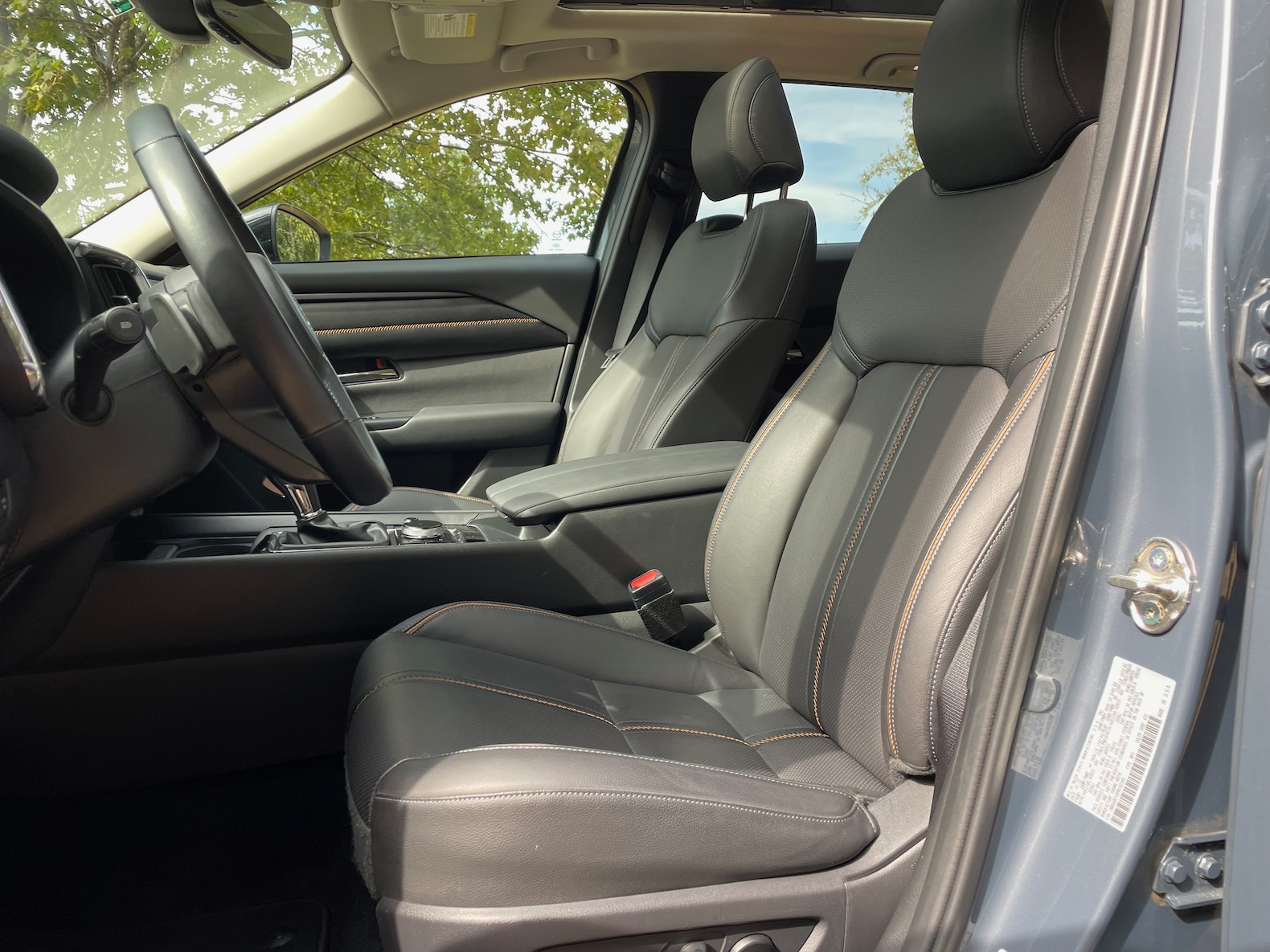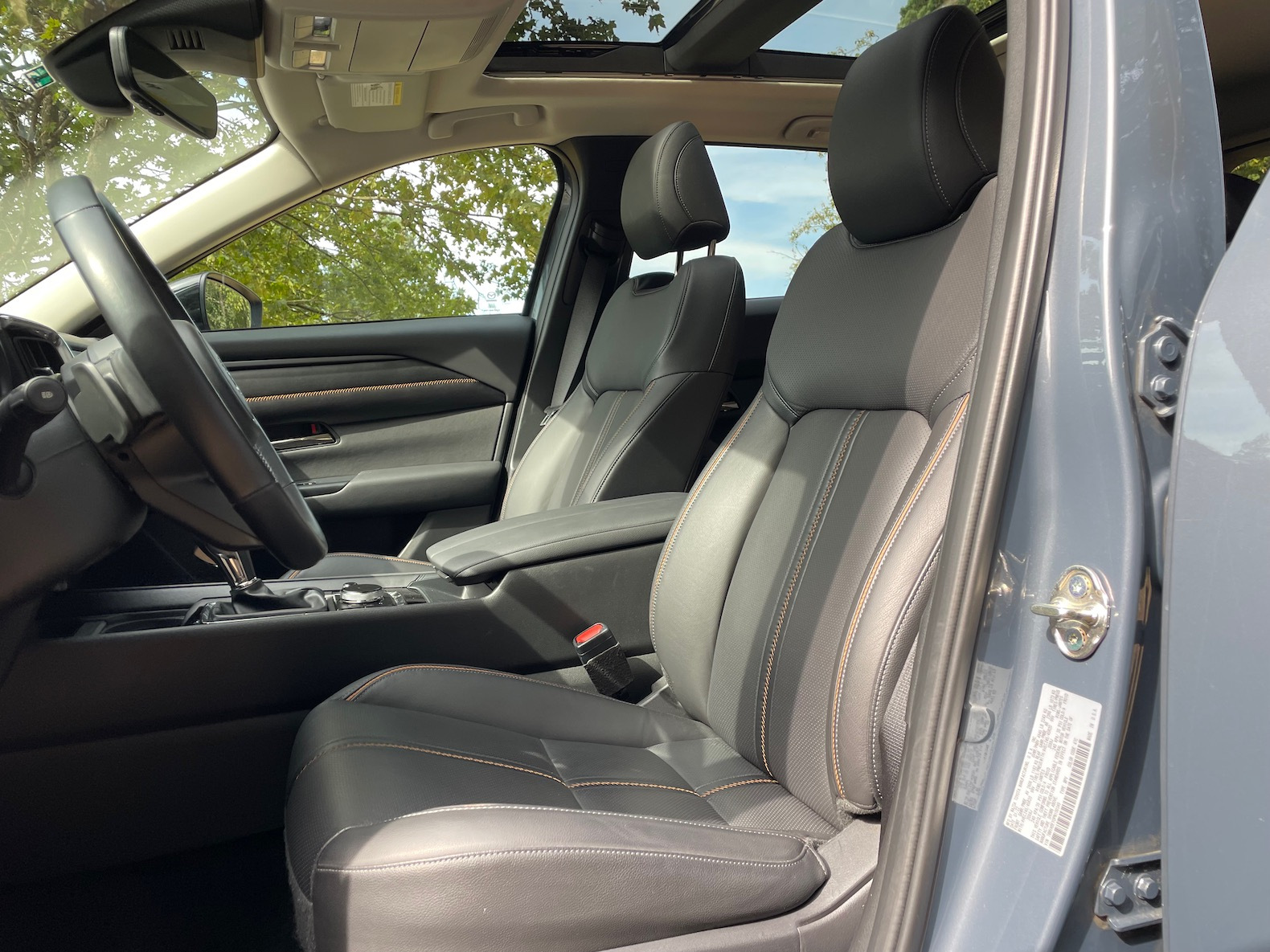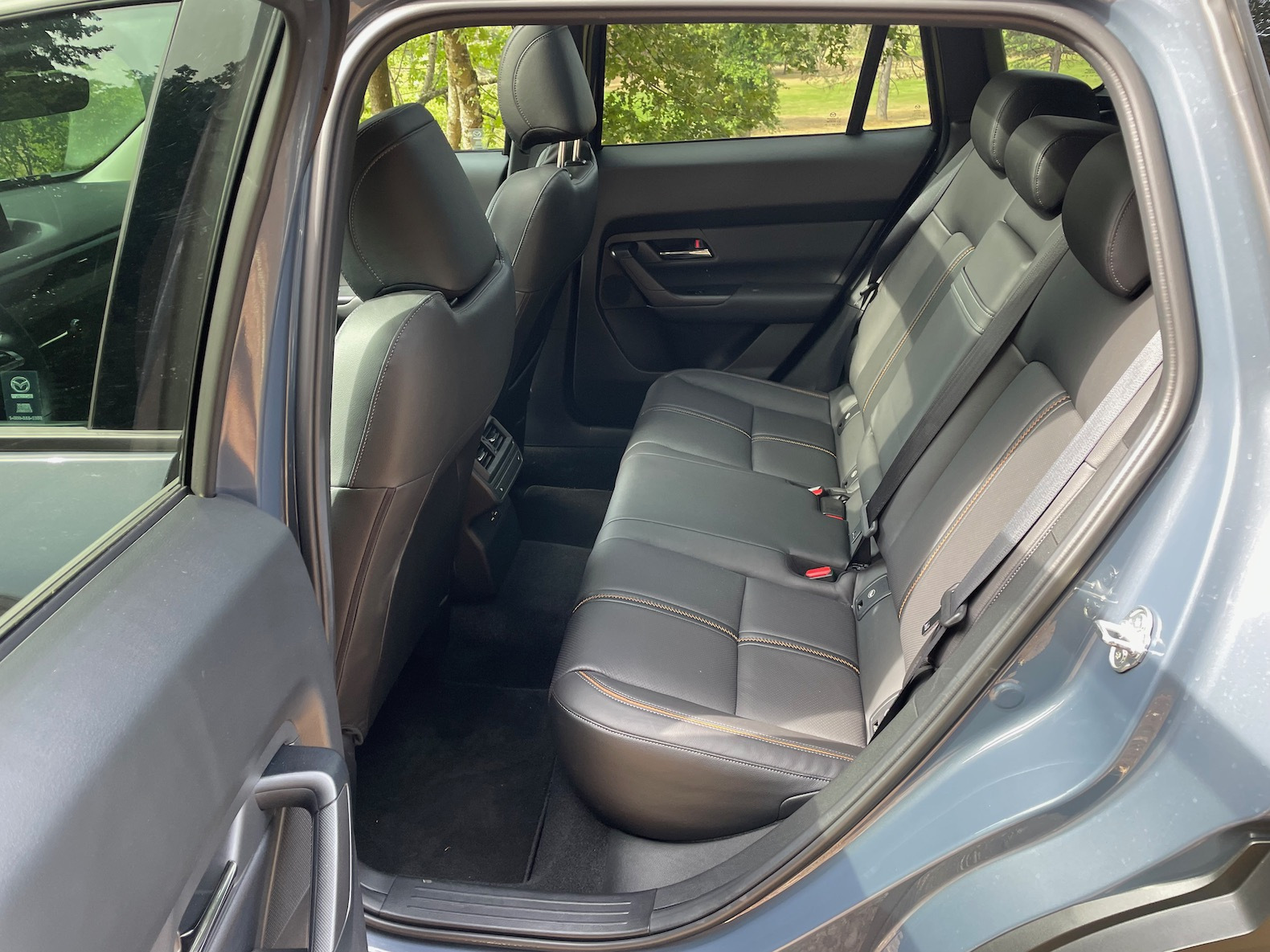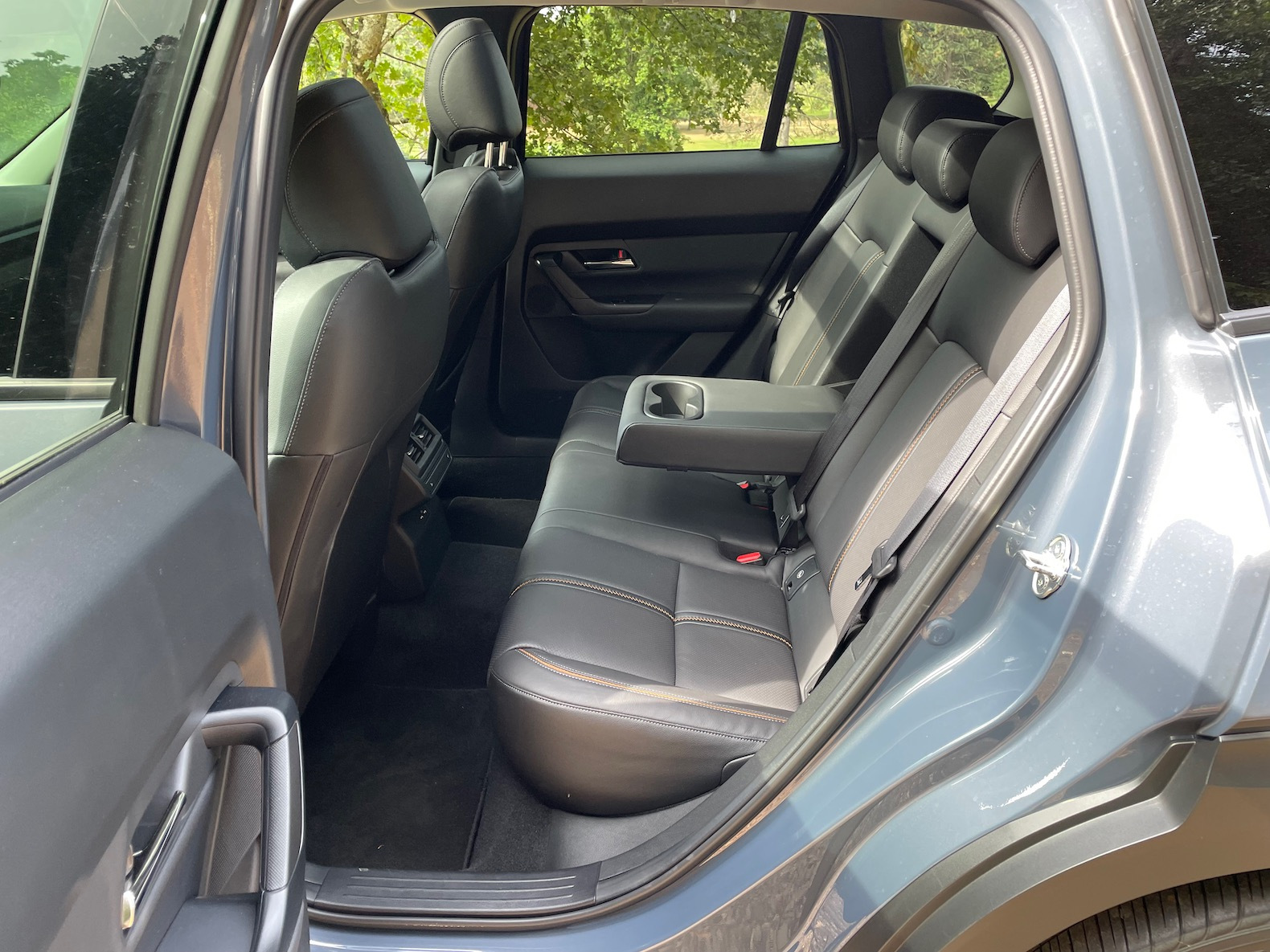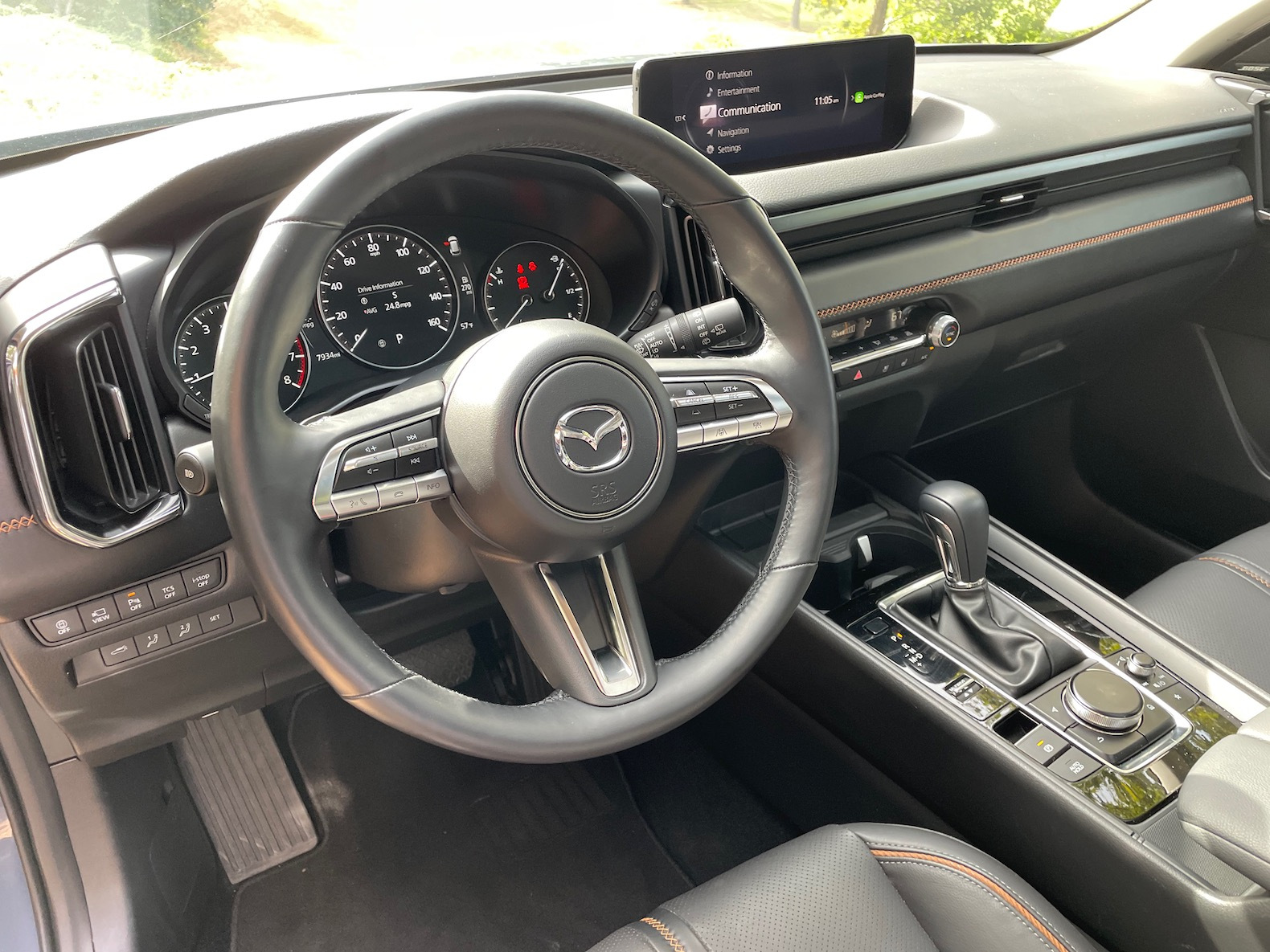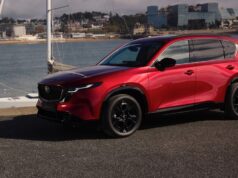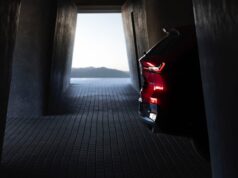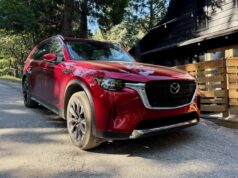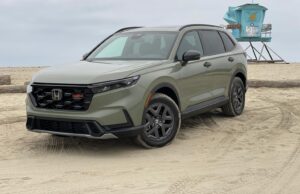The 2023 Mazda CX-50 nudges toward a more rugged future, but agility’s still a strong suit. The CX-50 is a compact crossover SUV that seats five passengers. Longer, wider, yet lower than the CX-5, the CX-50 hitches its off-roadable wagon to the adventure lifestyle craze proliferating through the segment with vehicles such as the Ford Bronco Sport, Jeep Cherokee Trailhawk, Toyota RAV4 Adventure and many more. Sharing a platform with the Mazda CX-30 but built alongside the Toyota Corolla Cross, the larger CX-50 adds a puzzling piece to Mazda’s small but strong lineup.

The fluid grace of other Mazdas gets a jolt in the CX-50. Handsome from most angles with new found edges and corners, the CX-50 drops the formal grace of Mazda’s old SUV lineup. From the front, the wide front end of the CX-50 embraces the trend for bigger, deeper grilles. Thin headlights knit it all together for a cohesive look that breaks at bowed-out front fenders that look like they’re from an altogether different vehicle. The heavy fender motif repeats itself at the rear, squaring off over the rear wheels while the roofline stamps out a crisper, angular look than the more curvaceous CX-5. Mock air outlets at the rear hang like saddlebags, beneath squared-off taillights that shift this SUV out of the softly rounded past.
The CX-50’s more agile than entertaining. Two powertrains take up slots in the CX-50 lineup. Base models tap a 187-hp, 2.5-liter inline-4 that must work hard to earn its keep. We’ve driven this powertrain with all-wheel drive in the older CX-5 and it makes for a vehicle of an entirely different order. The Mazda 6-speed automatic doesn’t have as many gears as its rivals, and with the added weight of all-wheel drive, the CX-50 won’t be ripping off six-second 0-60 mph runs.
We’ve spent lots of time in the 2.5-liter turbo-4 in top trims. With its 227 hp and 310 lb-ft of torque (on regular gas; with 93-octane fuel, it’s 256 hp/320 lb-ft of torque), the turbo engine also is fitted with the 6-speed automatic and all-wheel drive. With some low-end turbo lag, even when flicked into a Sport drive mode, the CX-50 lags before it spools up fully; when it’s on boil it delivers most of its available torque from 2,000 rpm upward, and that leaves it better tuned for passing, particularly on highways. All versions come with all-wheel drive.
In either case, the CX-50’s charm is in its steering and ride. It’s longer than the CX-5 and the petite CX-30, and doesn’t suffer the lumpy responses those crossovers can exhibit on rumpled roads. It’s an excellent interstate cruiser for that reason, with a solid steering feel that sticks to the center and tracks down the highway without the wandering, inattentive feel of some of its South Korean competitors. Mazda doesn’t fit the CX-50 with any adaptive dampers or air suspension, but its poise gives a second or two of pause. It’s a joy to thread through canyon passes, both composed and comfortable to flick through curves.
With new Off-road and Towing drive modes, the CX-50 can lug up to 3,500 lb (2,000 lb on the base model). The former delivers more rear-wheel torque and filters off some steering feedback for smoother trail riding. With up to 8.3 inches of ground clearance on base cars or 8.6 inches on turbo versions, the CX-50 can pull a box trailer or plot a moderately challenging course on gravelly paths with more than the usual flair.
The CX-50 unfortunately lapses in fuel economy and it’s not stellar. The EPA rates it at 24 mpg city, 30 highway, 27 combined in base form. To compare, a base Hyundai Tucson with all-wheel drive earns 29 mpg combined; a Subaru Forester, 33 mpg. With the turbo-4 engine, the CX-50 dips to 23/29/25 mpg. As of now, no hybrid edition has been confirmed.
No crash-test scores have been published. There’s no data on its crash performance yet, but the CX-50 does offer standard automatic emergency braking, adaptive cruise control, blind-spot monitors, automatic high beams, and active lane control. A surround-view camera system is available, as are parking sensors, which are recommended, since outward vision to the rear is a weak spot.

Inside, Mazda drapes its usual dash shape over a horizontal bar that provides a platform for an 8.8-inch or 10.3-inch touchscreen. Pared down to a minimalist set of toggles and switches, with splinters of metallic trim across the dash and around the vents, the CX-50 cabin does more with less, except on its feature-filled steering wheel. There’s still a rotary control knob on the console, and most drivers will have to learn to live with it, since the CX-50’s touchscreen sits so far out of reach.
The CX-50 shares a platform with the CX-5 and the smaller CX-30, but it’s been stretched out to make the CX-50 longer and wider than the CX-5 by a fair margin. The CX-50’s 110.8-inch wheelbase is 6.4 inches longer than the CX-30’s and 4.6 inches longer than the CX-5’s. At 185.8 inches long and 75.6 inches wide, it’s also 5.7 inches longer and 3.0 inches wider than the incumbent CX-5.
The fit and finish of the CX-50 vies for attention from anyone who’s driven a lesser rival. Mazda pays a lot of attention to the materials it stitches inside, and the CX-50 shows them off even better with the available panoramic sunroof. We haven’t sampled a cloth-interior car, but the leather-lined CX-50 has supportive and well-shaped front seats, with good adjustment and power assist on most trims. It’s not much larger than the still-on-sale CX-5, and so the CX-50’s back seat doesn’t strike us as substantially better. It’s big enough for two adults to stay calm for a long road trip, but a third should be slight of stature.
Cargo room behind the back seats has increased to 31.4 cubic feet, versus the CX-5’s 29.1 cubic feet, but it’s lower with those seatbacks folded down—56.3 cubic feet, versus the CX-5’s 58.1 cubic feet. Mazda says the space is both wider and longer in the newer car, and thus more useful; we’ll let Home Depot enthusiasts weigh in there.
The CX-50 ticks the right value boxes. Mazda sells the CX-50 in nine separate trims, which is too many. The base $28,025 version gets all-wheel drive, power features, keyless start, cloth upholstery, and an 8.8-inch touchscreen with wireless Android Auto and Apple CarPlay. Mazda only enables touch inputs on Android and Apple screens, though; for native functions, users must spin the knob on the console, a tedious affair at best.

The $35,625 2.5S Premium is the best value here. It takes the above and straps on a bigger 10.3-inch touchscreen, a power tailgate, leather upholstery, power heated front seats, a panoramic glass sunroof, 10-speaker Bose audio, and 17-inch wheels. A high-end 2.5 Turbo Premium Plus can cost $42,775, bundled with a surround-view camera system, heated rear seats, front and rear parking sensors, navigation, and steering support for blind-spot monitors. Mazda says soon it will add a tenth Meridian model to the CX-50 family. It will add on roof crossbars, all-terrain tires, and even more rugged styling.
The new CX-50 continues Mazda’s award-winning recipe; a great handling SUV with killer looks and Mazda’s great reliability. Mazda has made the new CX-50 larger which better helps it compete with ever growing competitors. It’s the smart crossover that we’d want to be driving on a daily basis since it can put joy into any drive. Which one is right for you really comes down to what kind of driver you are. If you’re more concerned about fuel economy pick the Premium with its cost savings, but if you’re more power hungry choose the Turbo; regardless you can rest assure knowing you’ve picked a great midsize SUV.

